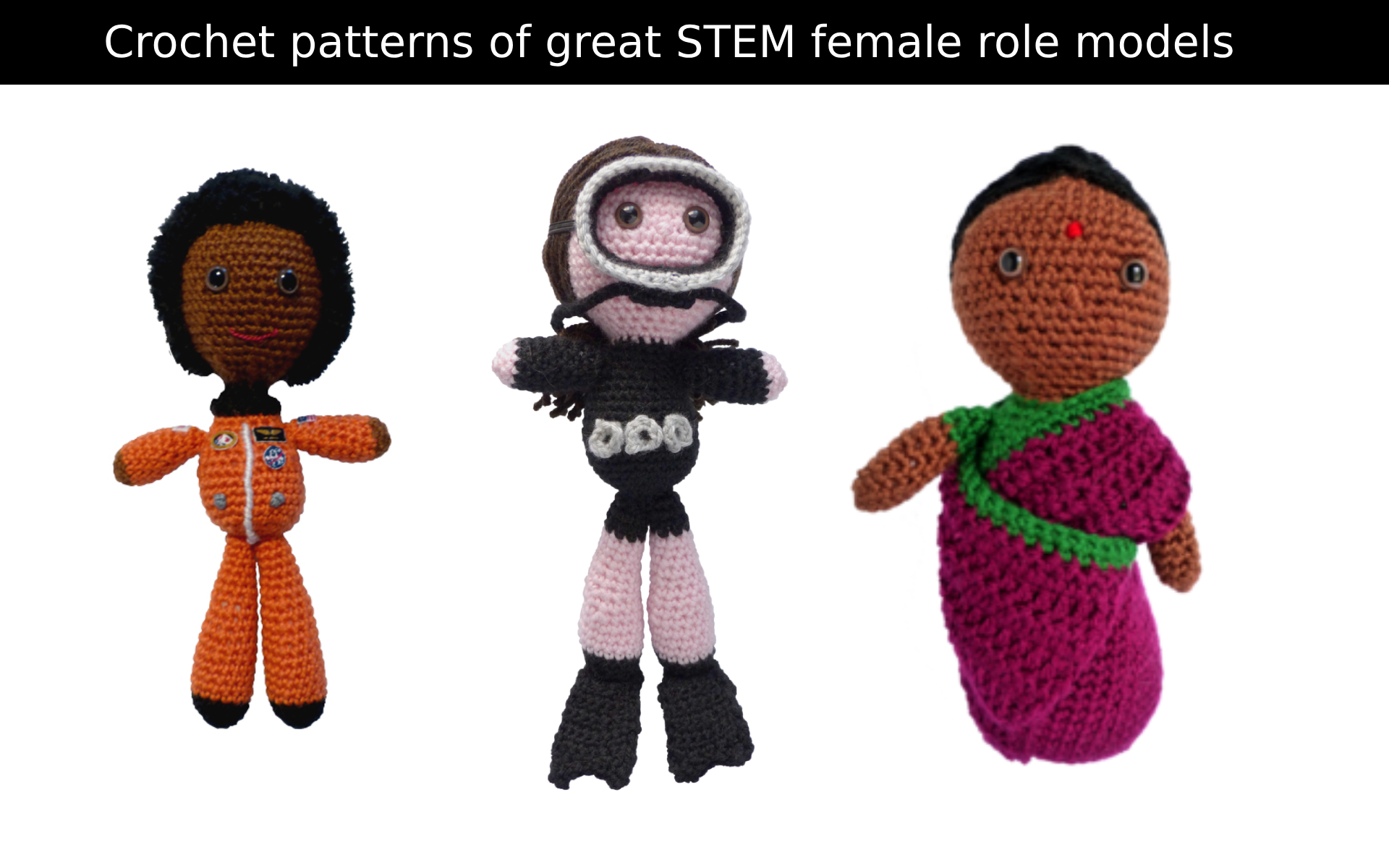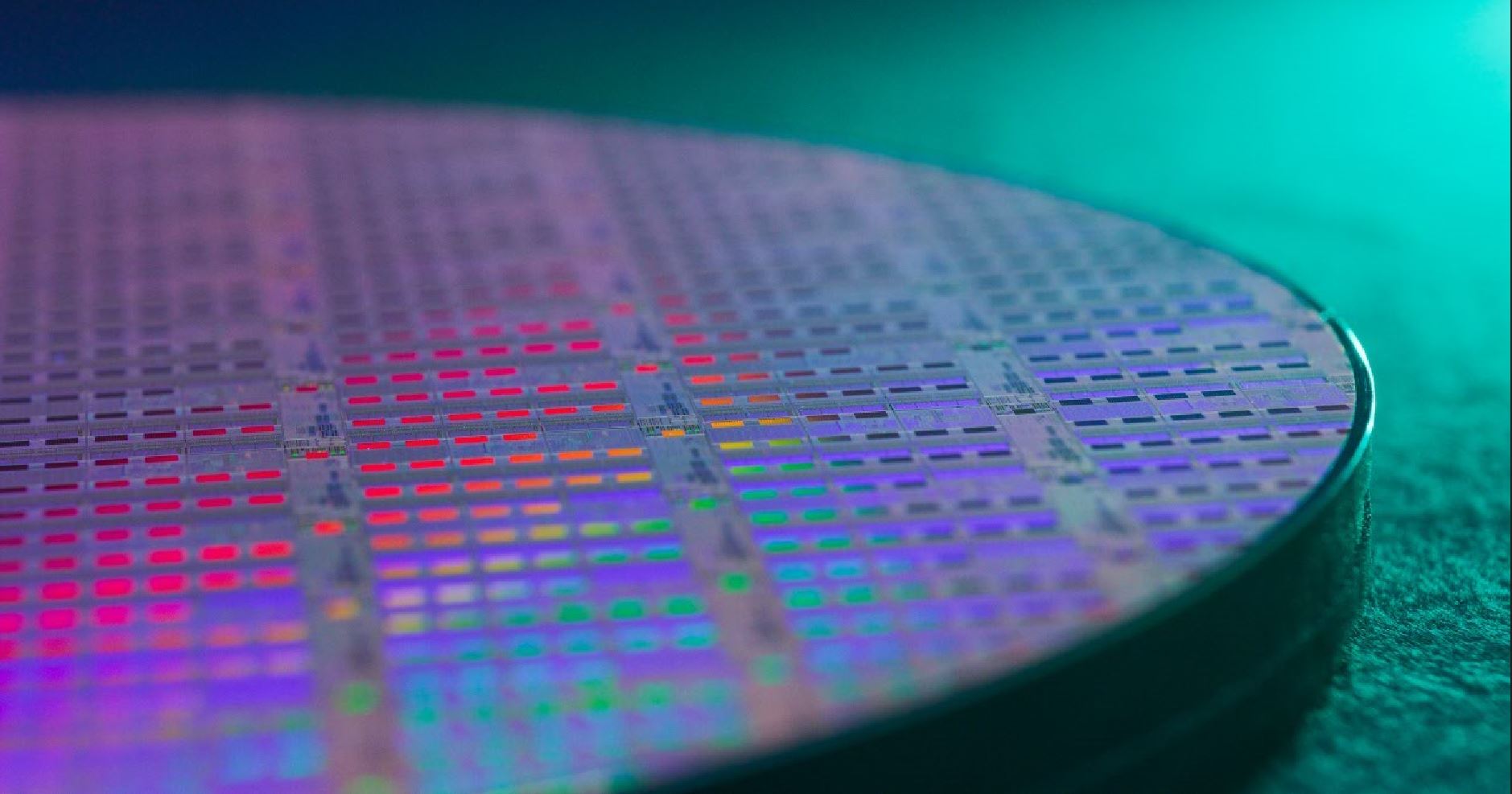Crochet patterns of great STEM female role models, aims to introduce girls to STEM role models early to help them understand that they can have a career in STEM
By: Findingada. Have you ever looked at the dolls available for girls and wondered where all the great STEM role models are? There are uncountable numbers of patterns available online for pretty much everything else you can think of, but very few dolls for girls interested in STEM. We at Findingada, decided to fill that gap with crochet patterns in the Japanese amigurumi style. The crochets are free to download below on Techatty.com

Have you ever looked at the dolls available for girls and wondered where all the great STEM role models are? There are uncountable numbers of patterns available online for knitted and crocheted cats, dogs, fossils, sharks, cupcakes, trees, blood cells, snails and pretty much everything else you can think of, but very few dolls for girls interested in STEM. We decided to fill that gap with crochet patterns in the Japanese amigurumi style.
Patterns are free to download, and if they prove popular we aim to use Kickstarter to raise funds to put together a book.
Patterns
The figures are very simple to make, using basic techniques like the double crochet (US: single crochet), increase and decrease. You can view the projects on Ravelry, where you can add your own projects and photos; to download a PDF of the full pattern just click the links.
Why are dolls of women in STEM important?
There are many cultural and structural barriers that reduce the number of girls and women who pursue an education or career in STEM. The idea that STEM subjects are “not for girls” is pervasive. Girls understand gender stereotypes and start thinking about careers from a very young age. The WISE Campaign’s report, Not For People Like Me found that “from age 10 start to self-identify as ‘not STEM’ so start to plan not to study STEM post-16 very early”.
We know that one-off interventions are ineffective and that we need to focus on long- term structural and cultural changes. This includes initiatives to challenge stereotypes, provide careers information, and create suitable role models, all with the aim of supporting and encouraging girls and women to achieve their full potential in STEM.
This series of crochet patterns aims to introduce girls to STEM role models early to help them understand that they can indeed have a career in STEM.
Dr Mae Jemison
Amigurumi Astronaut Crochet Pattern
Dr Mae Jemison became the first woman of colour in space on 12 September 1992, going into orbit on the Space Shuttle Endeavour. Graduating from Stanford with a BSc in chemical engineering, Jemison went on to become a medical doctor, getting her degree from Cornell Medical College. She worked as a general practitioner before joining the Peace Corps and working in Liberia and Sierra Leone for two years.
In 1987, Jemison applied to Nasa to become an astronaut, initially working at the Kennedy Space Centre
on the Shuttle’s computer software. Whilst in space on Mission STS-47, Jemison worked on two bone cell
experiments, as well as experiments on weightlessness and motion sickness. She worked at Nasa for six years, and spent over 190 hours in space.
Having left Nasa, Jemison maintains an interest in space travel, and now runs the 100 Year Starship project investigating the kinds of technologies that would be required for interstellar travel. She has founded two technology companies, and the Dorothy Jemison Foundation for Excellence which promotes STEM education.
Download the PDF file of Dr Mae Jemison pattern below:
Dr Mae Jemison PDF pattern - UK
Dr Mae Jemison PDF pattern - US
Dr Mae Jemison Ravelry page
Dr Eugenie Clark
Amigurumi Ichthyologist Crochet Pattern
Dr Eugenie Clark, The Shark Lady, was a Japanese American ichthyologist who studied sharks and pioneered the use of scuba diving in marine biology.
In 1955, Clark founded a research base on Florida’s gulf coast, the Cape Haze Marine Laboratory (later the Mote Marine Laboratory), where she studied the behaviour, reproduction and anatomy of sharks and other fish, becoming an international authority.
She worked hard to dispel many of the myths around sharks and was the first person to train sharks, proving that they aren’t mindless killing machines but have a good memory and can learn tasks as well as a dog. She also discovered that the Moses sole secretes an effective shark repellent, and was the first scientist to develop “test tube babies” in female fish.
Clark was an avid marine conservationist and wrote two books, Lady with a Spear (1953) and The Lady and the Sharks (1969). She continued her work, learning to pilot a deep sea submersible at the age of 87, until just before her death in 2015, aged 92. You can read about Dr Helen Scales’ encounter with Dr Eugenie Clark on her website or buy A Passion for Science: Tales of Discovery and Invention from Amazon.
Dr Eugenie Clark PDF pattern - UK
Dr Eugenie Clark PDF pattern - US
Dr Eugenie Clark Ravelry page
Dr Anandibai Joshi
Amigurumi Medical Doctor Crochet Pattern
Dr Anandibai Joshi (or Joshee) was the first Indian woman to become a medical doctor, the first Brahmin woman to leave India to obtain an education, and possibly the first Indian woman to visit America.
Born in Kalyan, Maharashtra in 1865, at nine she was married to Gopalrao Joshi, a widower 20 years her senior. She was 14 when she gave birth to her first child, a son, though he died after just ten days.
Gopalrao encouraged Anandi, as he called her, to learn English and suggested she study medicine. He eventually sent her to America on her own, despite her declining health, and despite disapproval from her townsfolk at home. At Serampore College she gave a speech defending her choice, describing the persecution she and her husband had endured, and emphasising the need for Hindu women doctors.
Joshi arrived in New York in 1883 and applied to the Women’s Medical College of Pennsylvania. She won a three year scholarship of $600 per year, and wrote her dissertation on “Obstetrics among the Aryan Hindoos”.
She graduated “with high honours” and “received quite an ovation” on 11 March 1886, at a ceremony attended by her husband. She also received congratulations from Queen Victoria.
She was offered the position of physician-in-charge of the female ward at Albert Edward Hospital in Kolhapur, where she would also be able to train female students. But she would never take up this position, nor would she open the medical college for women in India as she had dreamed.
The tuberculosis which she had contracted before she left for America worsened, and she died in her mother’s arms, aged 21, on 26 February 1887.
Dr Anandibai Joshi PDF pattern - UK
Dr Anandibai Joshi PDF pattern - US
Dr Anandibai Joshi Ravelry page





































